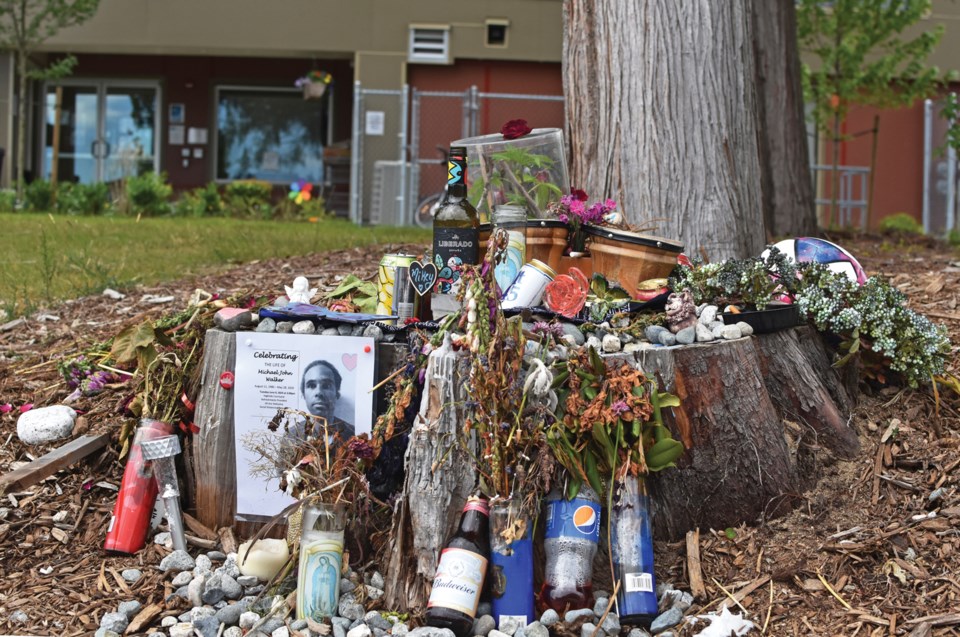People who use drugs on the Sunshine Coast are being urged not to use alone as the region grapples with a spike in overdoses.
While BC Emergency Health Services (BCEHS) responses to overdoses in the first five months of 2020 are comparable to the same time period last year, they shot into the double digits in May. BCEHS responded to 10 overdose calls in Sechelt compared to five in May 2019.
“The toxicity of the drug supply right now is out of control,” said Nick Gaskin, who manages homelessness services on the Sunshine Coast through RainCity Housing. “We know there is fentanyl on the Sunshine Coast and we know that fentanyl is the killer that’s taking people’s lives from overdose right now.”
The risk of overdose was also highlighted on June 6 in an email circulated by Meghan Burrows, project lead for the Community Action Team – a provincially funded group of peers, politicians and service workers whose mandate is to reduce the risk of overdose on the Sunshine Coast.
The email referenced the recent death of a person who lived at the Hightide supportive housing complex in Sechelt, which is operated by RainCity. Included in the email was a letter from the Overdose Emergency Response Centre that warned of an increase in fatal and non-fatal overdoses. “The somberness of this letter is echoed by the community in [the] recent passing of a Hightide resident last week,” read the email.
The BC Coroners Service confirmed they are investigating the death of a male on May 28 at the Hightide residence, “with no further details at this time.”
As well, there were two suspected overdose deaths in the Sunshine Coast Local Health Authority in the first five months of 2020, according to the coroners service, and three during the same months last year.
While those numbers appear stable, they don’t tell the whole story, says Sunshine Coast’s medical health officer, Geoff McKee. Because rural populations are spread out and numbers are low, “finding a trend from small numbers can be a challenge.”
Ultimately, he said, “we know we still have a contaminated drug supply.”
The Sunshine Coast’s increased overdoses in May reflect an unsettling upward trend across the province. Last month, 170 people died from illicit drug overdoses – the highest number of deaths ever in a single month. The previous record was set in December 2016 when 161 people died.
Provincial health officer Dr. Bonnie Henry said the COVID-19 pandemic in the midst of an overdose crisis has overwhelmed the province’s resources and renewed her call for decriminalization of people who possess small amounts of drugs for their personal use.
Many of the deaths are related to COVID-19 measures that have kept people away from supervised-consumption sites, so they end up using toxic drugs alone.
“Many of those who died lived alone and, in fact, weren’t found for some time,” said chief coroner Lisa Lapointe.
Lapointe said the usual drug supply chains have been disrupted by border closures during the pandemic, creating opportunities for those who might be producing more powerful illicit substances without much knowledge.
“If it’s not in an actual lab then it might be in somebody’s kitchen lab,” she said.
Post-mortem toxicology suggests the increase in deaths is due to extreme fentanyl concentrations in the illicit-drug supply.
There have been nearly 4,500 overdose deaths in B.C. since the province declared a public health emergency in 2016. Illicit-drug-toxicity death rates in B.C. are the highest for any jurisdiction in Canada, and every region in B.C. has been affected.
On the Sunshine Coast, a number of tools are being enlisted to combat the increased risks, said medical health officer McKee.
One example is the launch of the Lifeguard App – a free mobile application developed through the Provincial Health Services Authority. A person sets a timer when they start using drugs and if they don’t stop it, it triggers a 9-1-1 call. “It’s not going to be the silver bullet, but it’s definitely another tool,” McKee said.
RainCity is accepting cellphone donations so people will have access to the application when using alone.
Signage has been posted, harm reduction discussions have been stepped up, and drug checking for the presence of fentanyl is also available at the Sechelt shelter and Hightide, including take-home test strips.
Gaskin said they are also strongly encouraging people to make use of a safe consumption site at the Sechelt shelter.
No fatal overdoses have occurred at that site or at a space at Hightide where people use drugs. “We have not lost anybody at any of our safe consumption sites,” Gaskin said.
Another tool is the safe supply program underway provincially that allows physicians to prescribe substances so that people can avoid purchasing poisonous street drugs.
Gaskin said clients are directed to Mental Health and Addiction Services, which can connect them with a physician who can prescribe. That team also provides treatment, detox and referrals to other services.
Harm reduction services are also still available and can be accessed through the Gibsons Health Unit at 604-984-5070 or the mobile phone of the Sunshine Coast’s harm reduction worker: 604-741-1082.
– With files from Sean Eckford, Louise Dickson, Camille Bains



